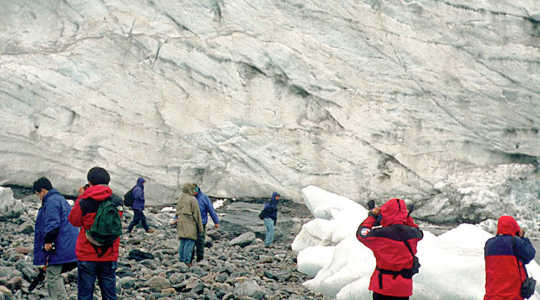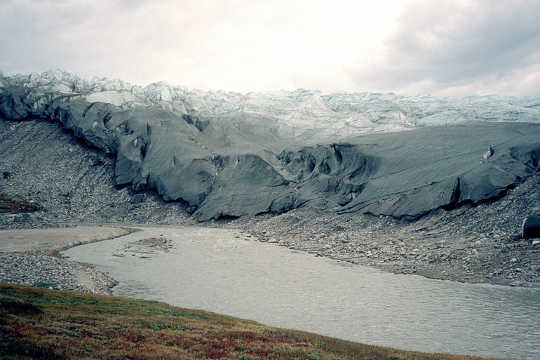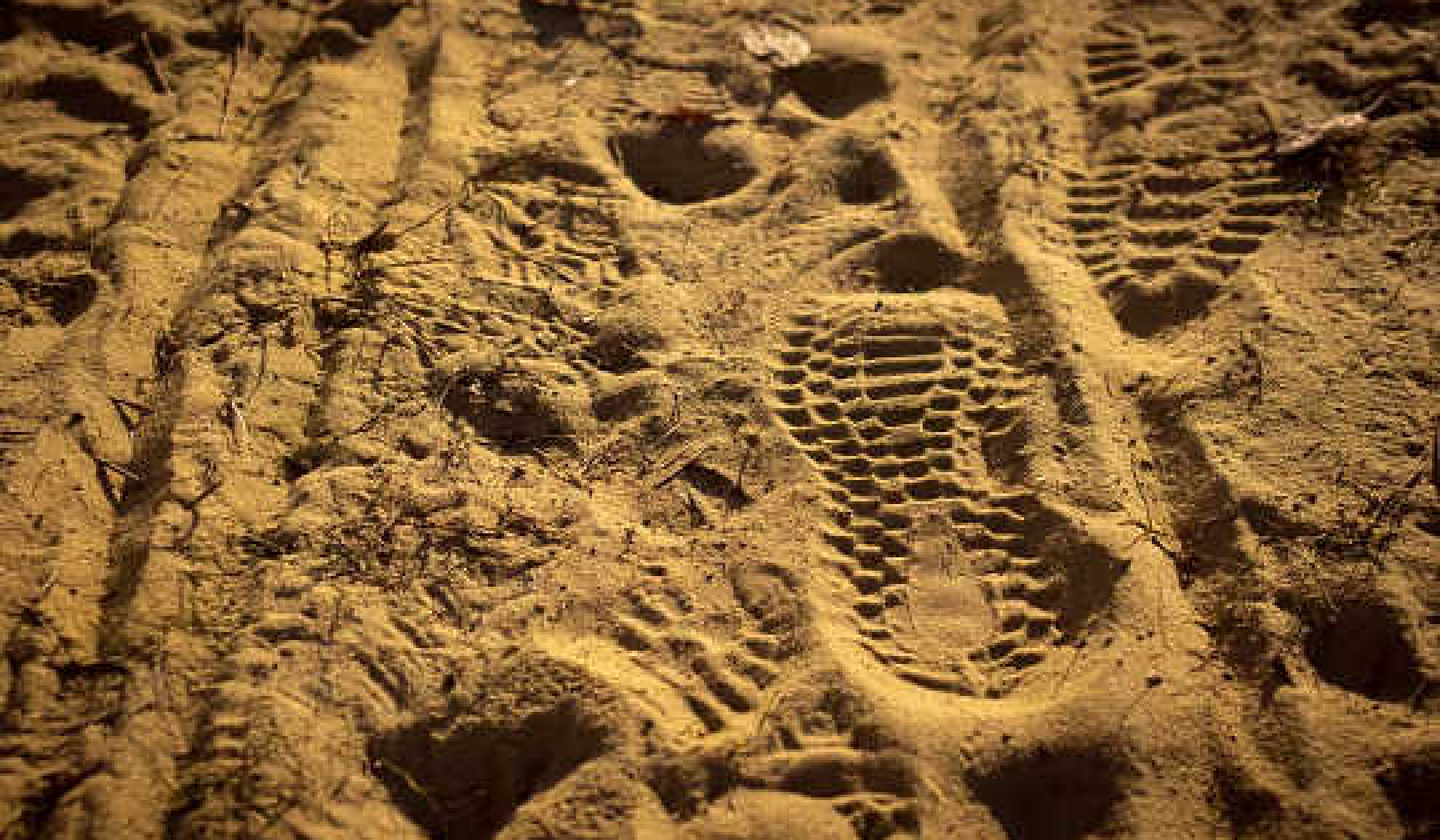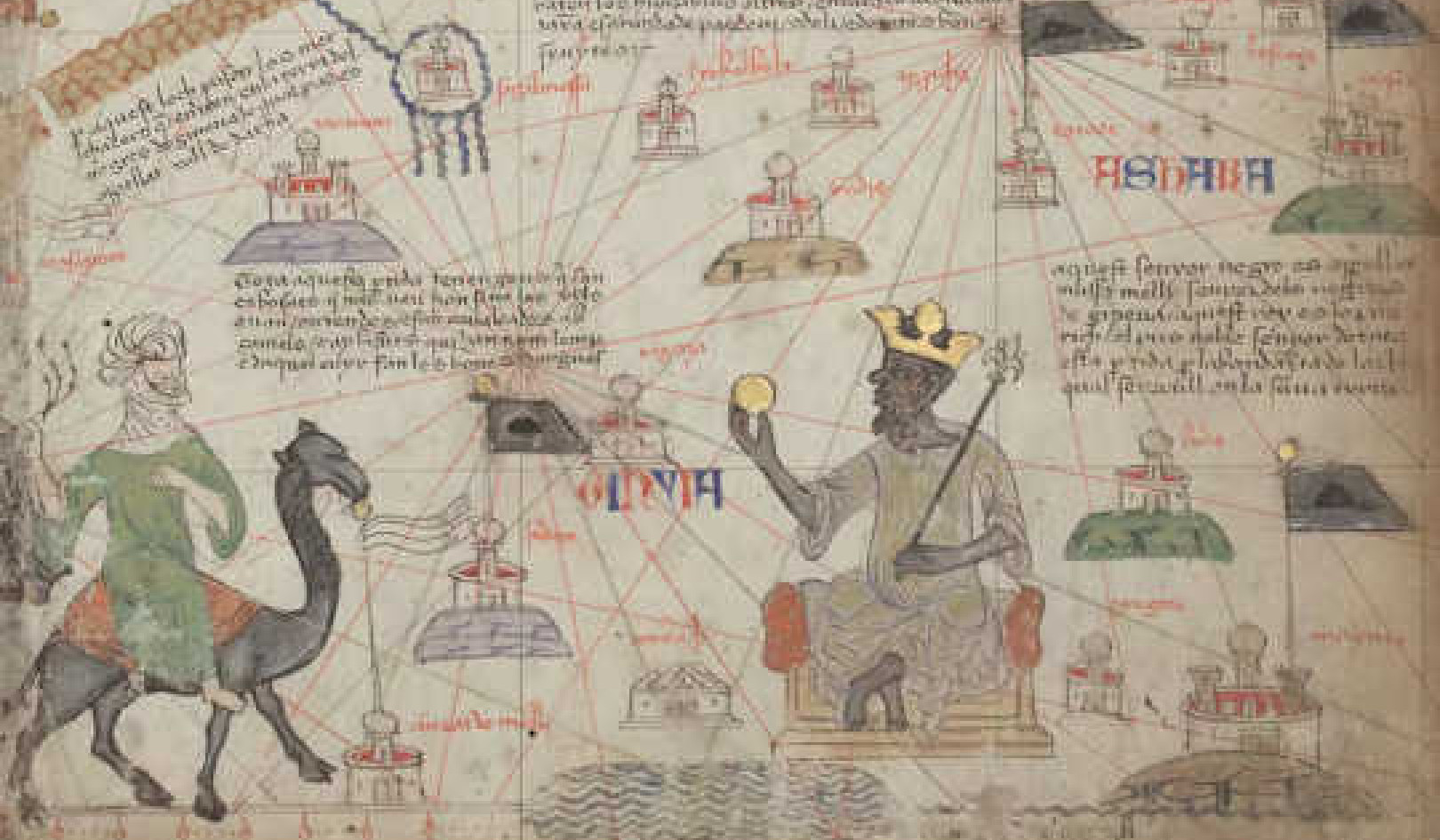 (Credit: University of Sheffield)
(Credit: University of Sheffield)
Following record-high temperatures and melting records that affected northwest Greenland in summer 2015, a new study offers the first evidence linking melting in Greenland to the anticipated effects of a phenomenon known as Arctic amplification.
Arctic amplification is the faster warming of the Arctic compared to the rest of the Northern Hemisphere as sea ice disappears.
It is fueled by a feedback loop: rising global temperatures are melting Arctic sea ice, leaving dark open water that absorbs more solar radiation which in turn warms the Arctic even more.
Arctic amplification is well documented, but its effects on the atmosphere are more widely debated.
One hypothesis suggests the shrinking temperature difference between the Arctic and the mid-latitudes will lead to a slowing of the jet stream, which circles the northern latitudes and normally keeps frigid polar air sharply separated from warmer air further south.
Slower winds could create wilder swings of the jet stream, allowing warm, moist air to penetrate further north.
“It’s a system. It is strongly interconnected, and we have to approach it as such.”
The new study, published in Nature Communications, shows that those anticipated effects occurred over northern Greenland during the summer of 2015, including a northern swing of the jet stream that reached latitudes never before recorded in Greenland at that time of year.
 “Our results show the effects of a strongly warming Arctic and disturbed atmospheric jet stream on causing a record melt of the far northern reaches of the Greenland ice sheet last summer,” says Edward Hanna, a professor in the geography department at the University of Sheffield.
“Our results show the effects of a strongly warming Arctic and disturbed atmospheric jet stream on causing a record melt of the far northern reaches of the Greenland ice sheet last summer,” says Edward Hanna, a professor in the geography department at the University of Sheffield.
“The study is closely linked to ongoing work conducted at the University of Sheffield, which analyzes the connection between Arctic climate change and extreme weather events across the densely populated northern hemisphere mid-latitudes.”
Marco Tedesco, a research professor at Columbia University’s Lamont-Doherty Earth Observatory and adjunct scientist at NASA Goddard Institute for Space Studies is the lead author of the study.
“How much and where Greenland melts can change depending on how things change elsewhere on Earth,” he says.
“If loss of sea ice is driving changes in the jet stream, the jet stream is changing Greenland, and this, in turn, has an impact on the Arctic system as well as the climate. It’s a system. It is strongly interconnected, and we have to approach it as such.”
The Greenland ice sheet, Earth’s second largest after Antarctica, holds enough ice that, if it were to melt entirely, it would raise average global sea level by about seven meters (about 23 feet). Understanding the drivers of melting is critical to understanding how quickly and by how much sea level will rise in the future and how Greenland’s freshwater runoff will affect ocean circulation and ecology.
Northwest Greenland’s summer of melt started in June 2015, when a high-pressure ridge squeezed off from the jet stream, the study shows. It moved westward over Greenland until it sat over the Arctic Ocean and affected weather across the island through mid-July.
That high-pressure system, called a cut-off high, brought clear skies and warmed northern Greenland, helping set records for surface temperature and meltwater runoff in the northwest. With less summer snow falling and melting underway, northern Greenland’s albedo, or reflectivity, also decreased.
A less-reflective surface absorbs more solar energy, which feeds more melting, as Tedesco illustrated in a study earlier this year on the darkening of Greenland.
Weird wind and jet stream
Northern Greenland also set an unusual July record for wind—the winds blew east to west on average, rather than the usual west to east; only two other years on record show easterly winds on average in July, both slower.
At the same time, the jet stream’s northernmost ridge swung farther north than ever recorded for that month, passing 76 degrees North latitude, nearly two degrees further north than the previous July record, set in 2009, the authors write.
The same atmospheric pattern had a different impact on southern Greenland, where new melting records have been set over the past decade. The south saw more snow during summer of 2015 and less melting than previous years.
The authors stop short of confirming Arctic amplification as the cause of the warming, but they say the results fit the anticipated effects of Arctic amplification described by Jennifer Francis of Rutgers University and Stephan Vavrus of the University of Wisconsin in a 2012 paper.
‘Uncharted territory’
Recent studies exploring the potential effects of Arctic amplification show high-pressure blocks connected to northward swings of the jet stream have become more common near Greenland.
Hanna also released a study in May using the Greenland Blocking Index to measure the strength of stationary high-pressure systems over the past 165 years and found that seven of the top 11 systems had occurred since 2007.
“The significant increase in Greenland high-pressure blocking that has occurred in the last 20 to 30 years is clearly related to recent record warming over the region, as well as jet stream changes,” he says.
“This makes it more likely than not that within the next five to 10 years we will witness further record Greenland melt events like in 2012 and 2015.”
Whether the patterns seen in 2015 will continue in the future remains to be seen. This spring, Arctic sea ice set another record low for its maximum extent for the year.
“Greenland also experienced early season melt in early April of this year comparable to April 2012. Record setting melt occurred later that summer, but it is too early to tell whether the same will hold true in 2016,” says coauthor Thomas Mote of the University of Georgia.
“The conditions we saw in the past aren’t necessarily the conditions of the future. … We are going into uncharted territory,” Tedesco says.
Other coauthors of the paper are from the University of Liege, City College of New York, and University of Leeds. NASA and the National Science Foundation supported the work.
Source: University of Sheffield
Related Books
at

Thanks for visiting InnerSelf.com, where there are 20,000+ life-altering articles promoting "New Attitudes and New Possibilities." All articles are translated into 30+ languages. Subscribe to InnerSelf Magazine, published weekly, and Marie T Russell's Daily Inspiration. InnerSelf Magazine has been published since 1985.

Thanks for visiting InnerSelf.com, where there are 20,000+ life-altering articles promoting "New Attitudes and New Possibilities." All articles are translated into 30+ languages. Subscribe to InnerSelf Magazine, published weekly, and Marie T Russell's Daily Inspiration. InnerSelf Magazine has been published since 1985.

























